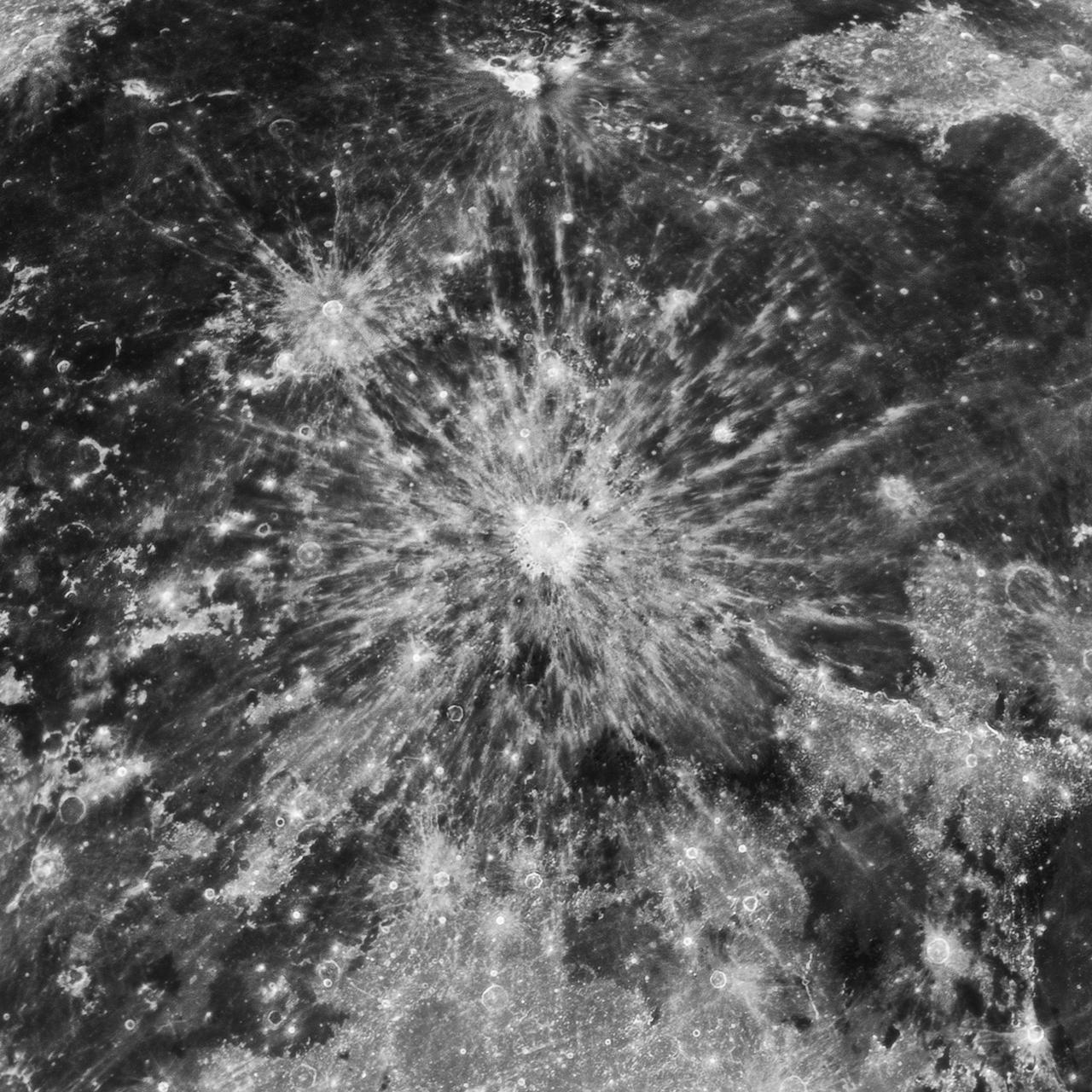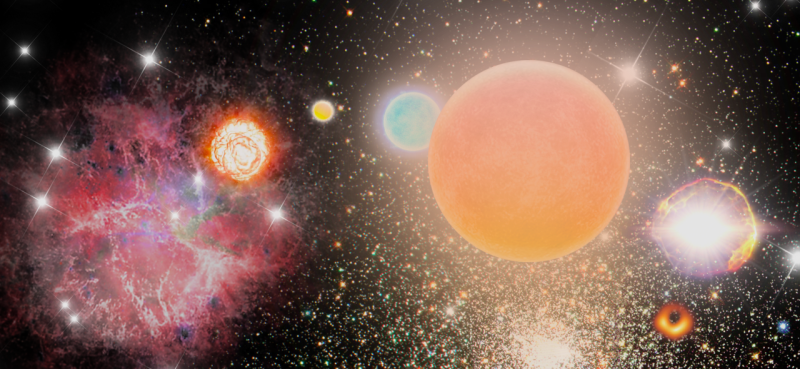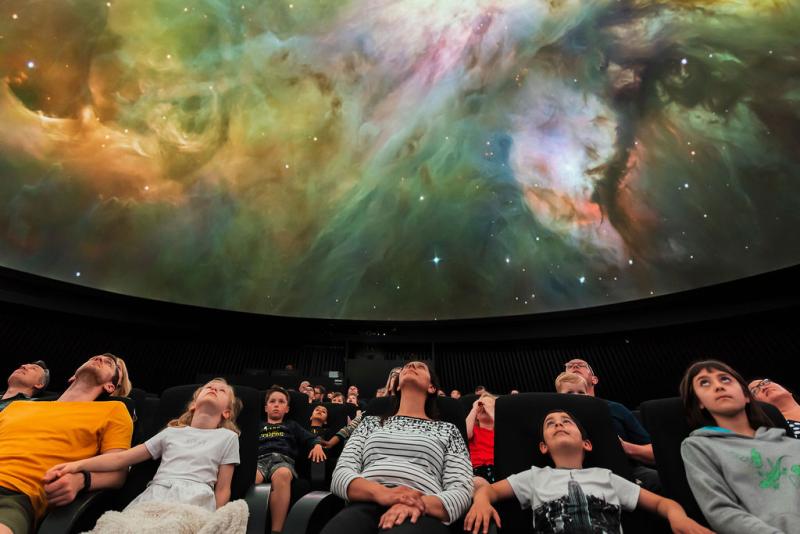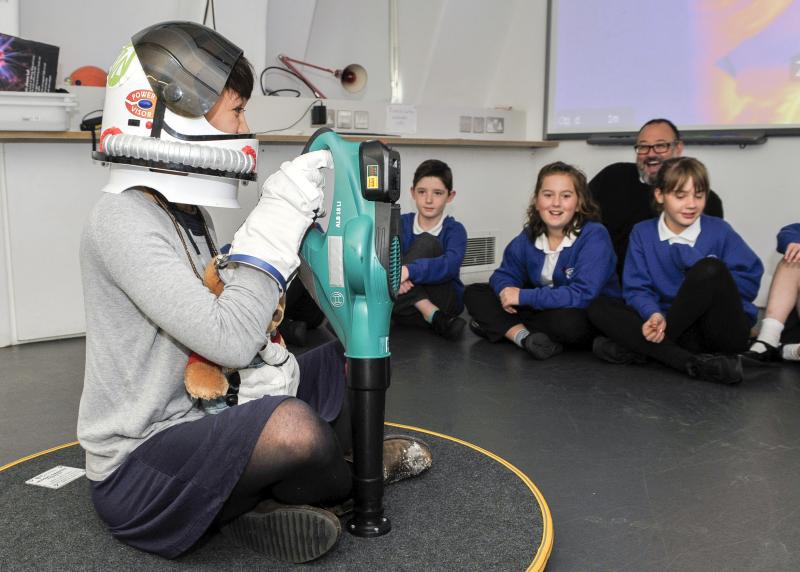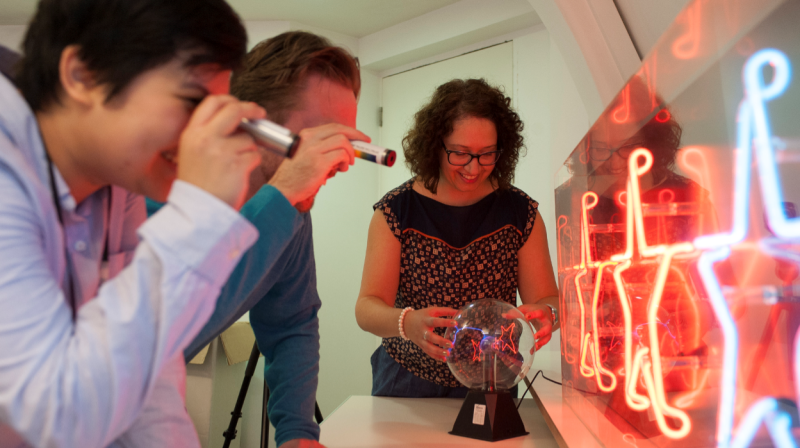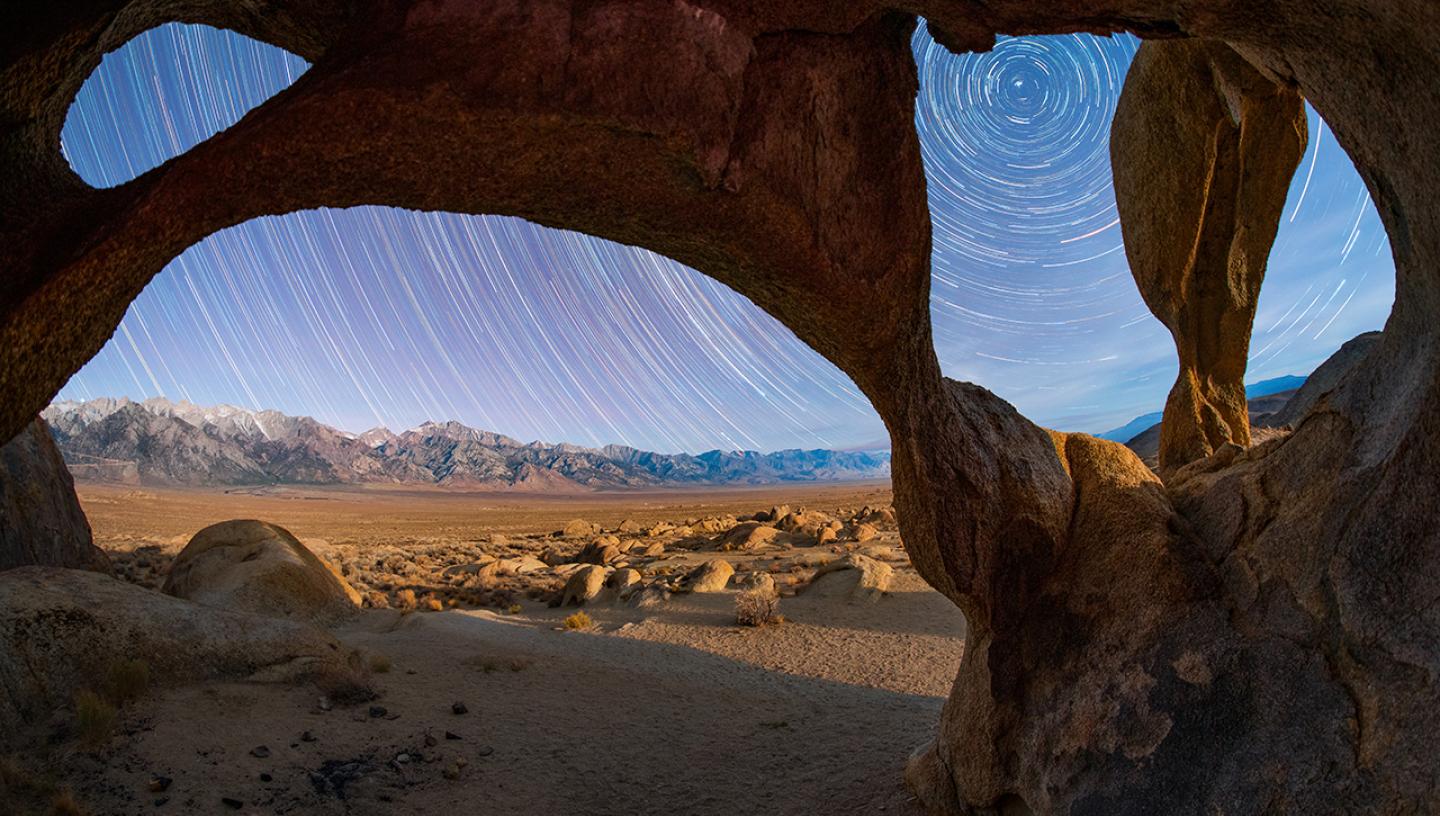
Discover what to see in the night sky in October 2022, including the Orionids meteor shower and a partial solar eclipse.
Top 3 things to see in the night sky in October
- Throughout the month - Explore the gas giants and the Red Planet
- 21/22 October - It's the peak of the Orionids meteor shower
- 25 October - Don't miss the partial solar eclipse
(Details given are for London and may vary for other parts of the UK)
Look Up! Podcast
Subscribe and listen to the Royal Observatory Greenwich's podcast Look Up! As well as taking you through what to see in the night sky each month, Royal Observatory Greenwich astronomers pick a topic to talk about.
For October, it's all about asteroids! We'll be discussing the DART mission and some updates from the Hayabusa2 mission. Have a listen below, then vote for your favourite story from this episode on our Twitter poll (@ROGAstronomers) which will go live during the first week of the month.
Our podcast is available on iTunes and SoundCloud
Astronomy in October 2022: key events and what to see
Throughout the month - The planets
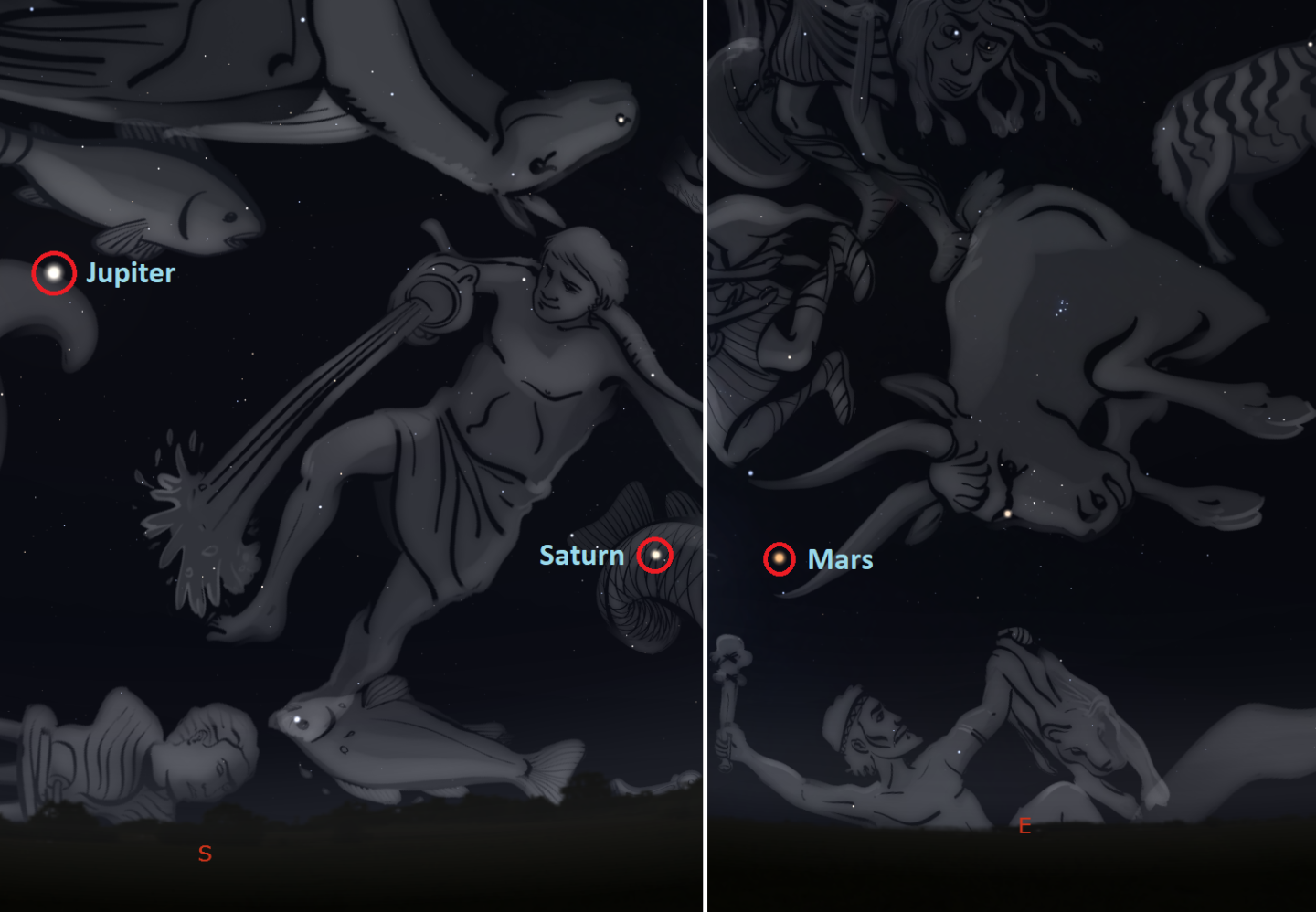
The gas giants Jupiter and Saturn dominate the evening sky throughout the month. Both will be easy to spot, especially the King of the planets, Jupiter, which will be shining quite brightly in the sky.
Jupiter and Saturn are always worth a view through a pair of binoculars or a telescope. If you’re a fan of the Red Planet, you’ll find Mars tucked between the horns of Taurus the Bull, rising in the east around 8:30pm.
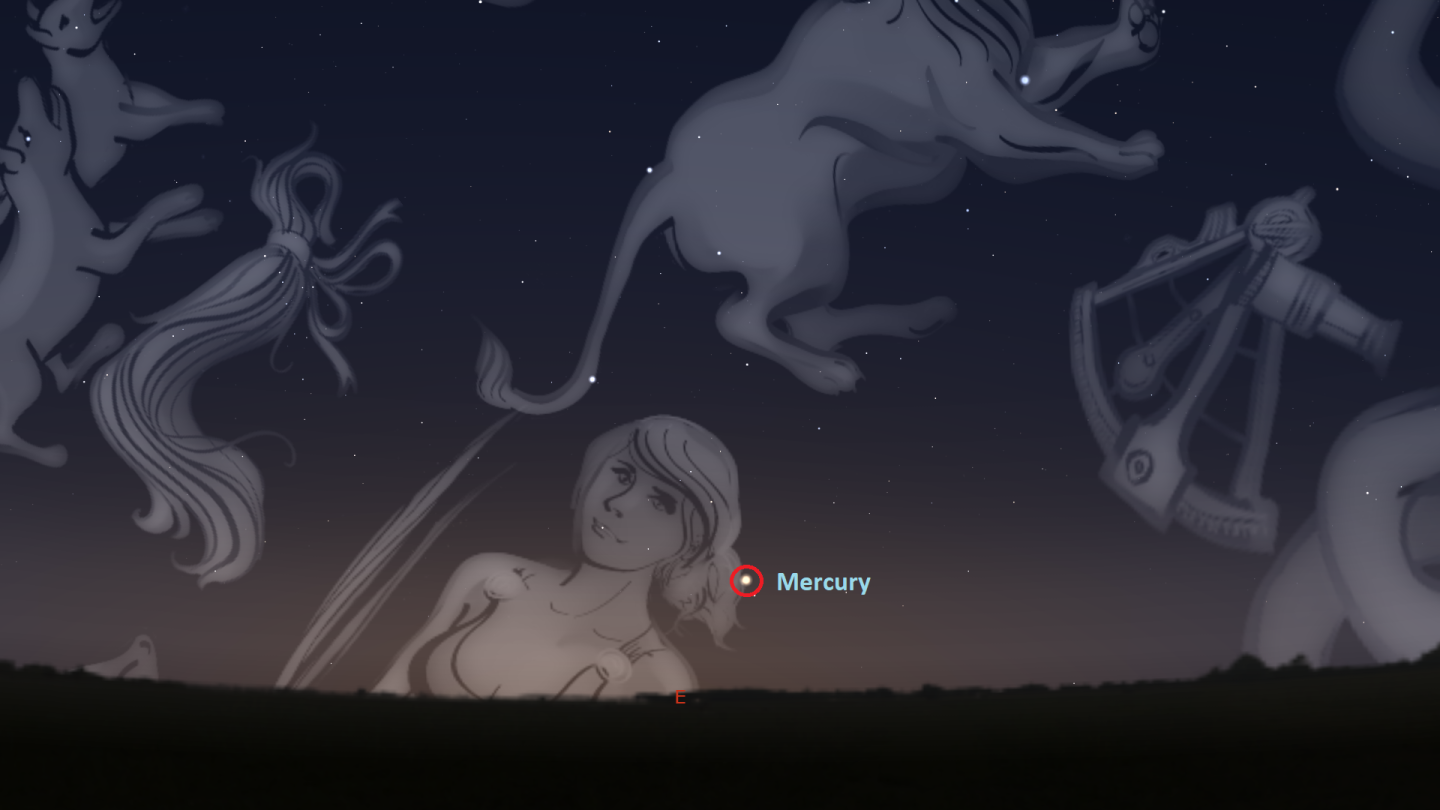
As for the inner planets, Venus is lost in the glare of the Sun this month, but Mercury will put on a great display as it reaches its greatest western elongation on October 8th. Because the angle between the Sun and Mercury will be at its greatest, this is the best time to view the planet.
Look towards the east at around 6:30am to catch a glimpse of Mercury. As the planet will be lying quite low above the horizon, you will need an unobstructed view to see it.
Throughout the month - A stellar cascade
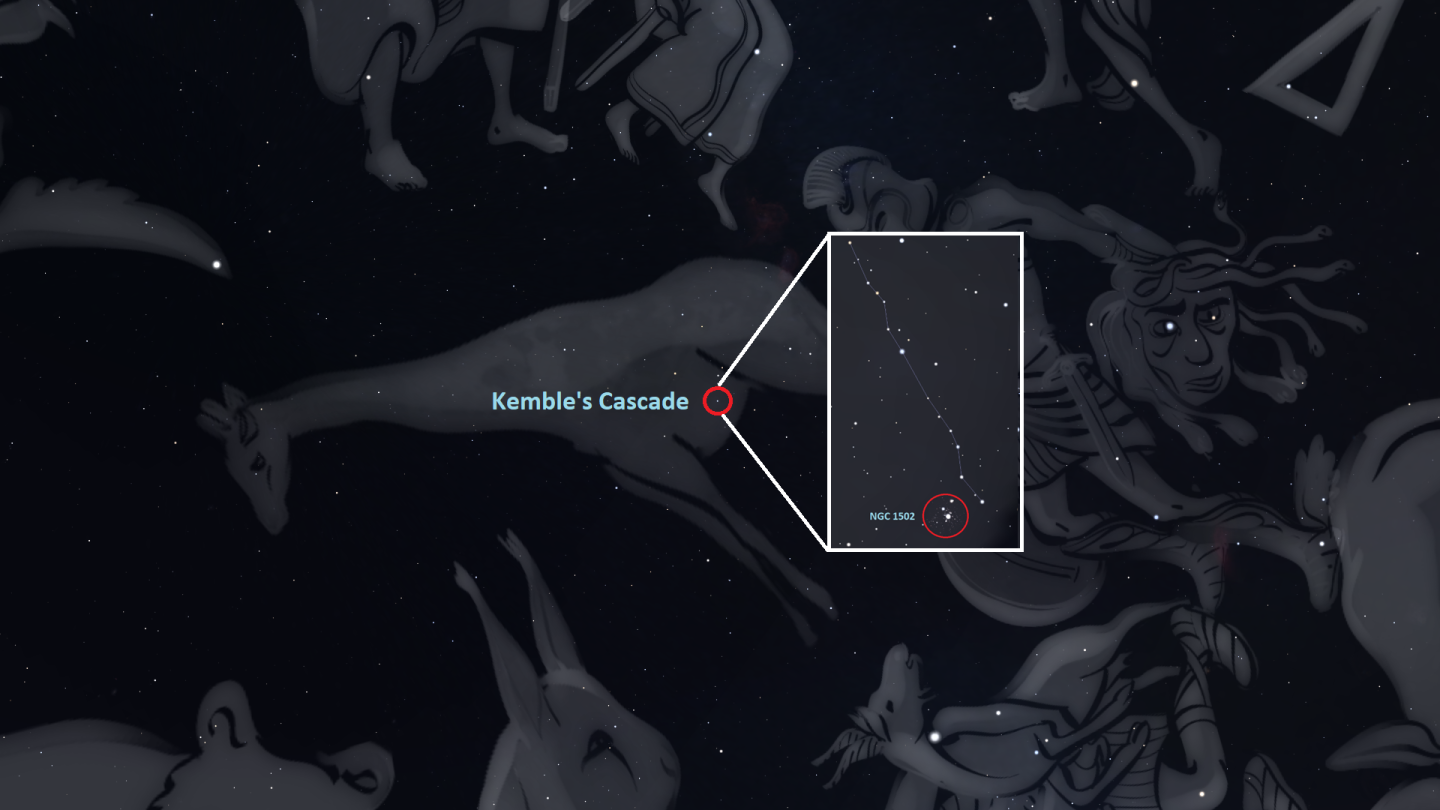
Asterisms are easy-to-recognise patterns of stars, with the Plough, or the Big Dipper, perhaps the most well-known asterism in the night sky. Hidden inside the constellation Camelopardalis is an asterism known as Kemble’s Cascade.
Containing around 20 faint stars nearly in a row, Kemble’s Cascade stretches over five times the width of a full moon. With a pair of binoculars or a telescope you’ll be able to see the full extent of this asterism.
To locate it, start at the ‘W’-shaped constellation Cassiopeia. Draw an imaginary line from Beta Cassiopeia, the second brightest star in the constellation, through Epsilon Cassiopeia, the fifth brightest star, and then extend this line by the same distance and you’ll find the asterism. Try to spot the two orange-coloured stars in this colourful stellar cascade.
Under dark sky conditions, you might be able to see NGC 1502, an open star cluster lying at the end of the cascade.
21/22 October: The peak of the Orionids meteor shower
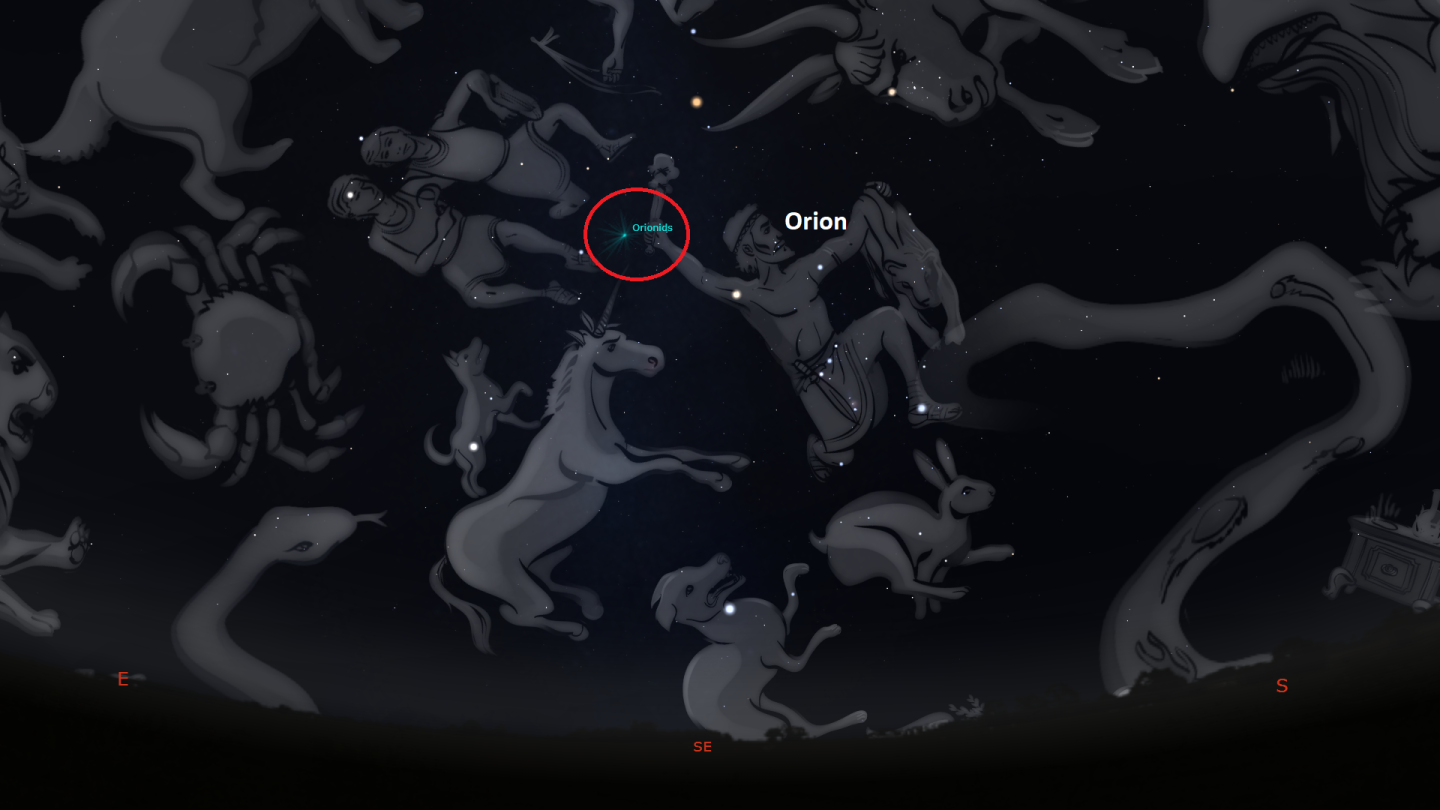
Keep your eyes trained on the skies on the night of the 21st and early morning of the 22nd October because you’ll be treated to some cosmic fireworks courtesy of the Orionids meteor shower. Halley’s Comet is responsible for producing the Orionids meteor shower, with the radiant of the shower lying in the constellation Orion.
As Halley’s Comet follows its path around our Sun, a trail of cometary debris is left behind. As the Earth passes through this debris trail, bits of comet collide with our atmosphere producing fiery streaks across the sky.
Under optimal viewing conditions, observers might be able to see around 25 meteors per hour. Viewing conditions will be good this year with relatively little moonlight, so fingers crossed for good weather!
For your best chance to spot some meteors, head to a dark sky location and aim your gaze about 45 degrees away from the constellation Orion. Remember to wrap up warm, especially if you’re going to be outside in the early hours of the morning.
25 October: Partial solar eclipse
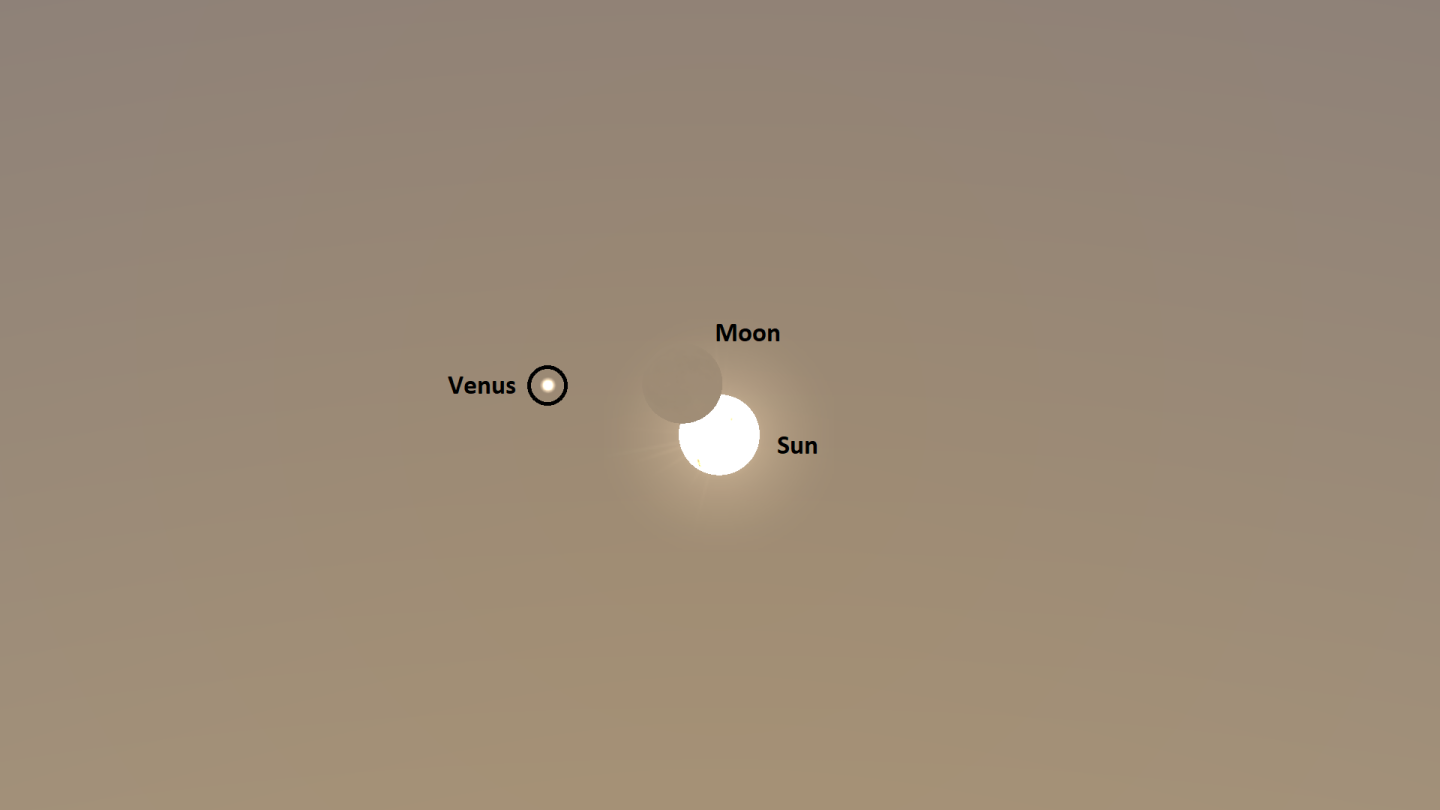
Observers in the UK will be treated to a partial solar eclipse on this day. A solar eclipse occurs when the Moon passes directly between the Sun and the Earth, blocking the Sun’s rays for a short amount of time. In a partial solar eclipse, only part of the Sun is blocked by the Moon.
Starting at around 10:08am BST, the Moon will begin to pass between the Earth and the Sun blocking out a portion of its light. Unlike a total solar eclipse where day turns to night, this eclipse is only about 25 per cent of totality, meaning only a small fraction of the Sun will be covered at its fullest point around 11am. What this means is that even if it’s a clear day, you won’t notice a large change.
No matter where you are, do not look directly at the Sun to see the eclipse, not even with sunglasses as you will damage your eyes. Instead, we recommend using eclipse glasses or a safe pinhole camera projection.
Our astronomers will be livestreaming the event onsite from our Annie Maunder Astrographic Telescope, so make sure to tune in live.
End of the month: Explore our galactic neighbours
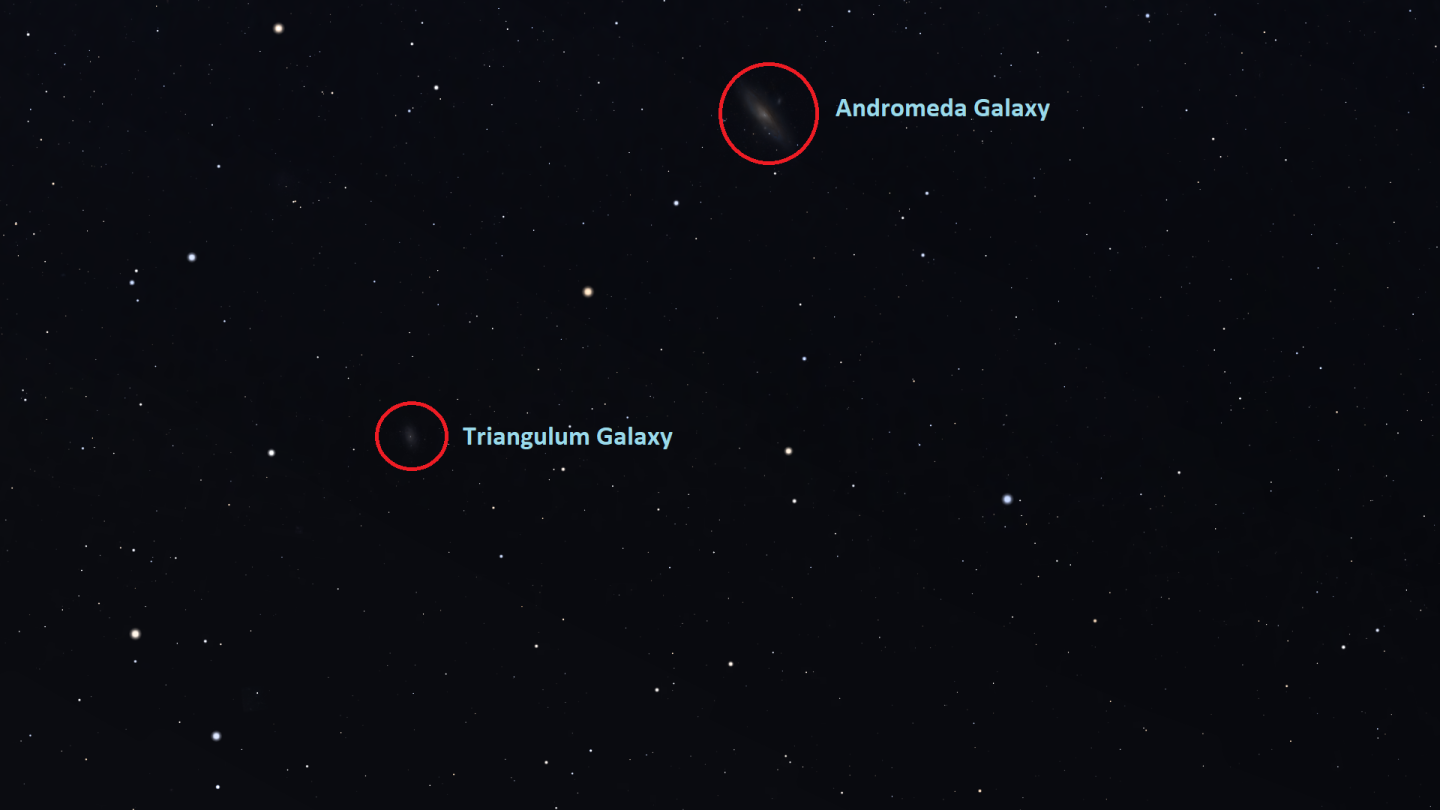
Dark skies towards the end of the month provide the perfect opportunity to have a look at some galaxies. Our own galaxy, the Milky Way, is home to around 200 – 400 billion stars and arches across the night sky. The Milky Way is one member of a cluster of galaxies known as the Local Group.
Two other members of this group, the Andromeda Galaxy and the Triangulum Galaxy, soar high in the sky around midnight and, if you’re lucky, you just might be able to spot both with the unaided eye under clear and dark sky conditions. However, for the best views grab a pair of binoculars or a telescope.
The Andromeda Galaxy is the largest one in the Local Group, followed by our own galaxy and then the Triangulum Galaxy. The Milky Way is on a collision course with the Andromeda galaxy and the two will merge in a few billion years' time to form “Milkdromeda”.
The Triangulum Galaxy, which is suspected to be a satellite galaxy of the Andromeda Galaxy, might miss the initial cosmic collision but could end up merging with "Milkdromeda" forming... "TriMilkdromeda"... "Milkdromedangulum"?... We'll start working on a better name.
Southern Hemisphere - throughout the month: Spot Sirius
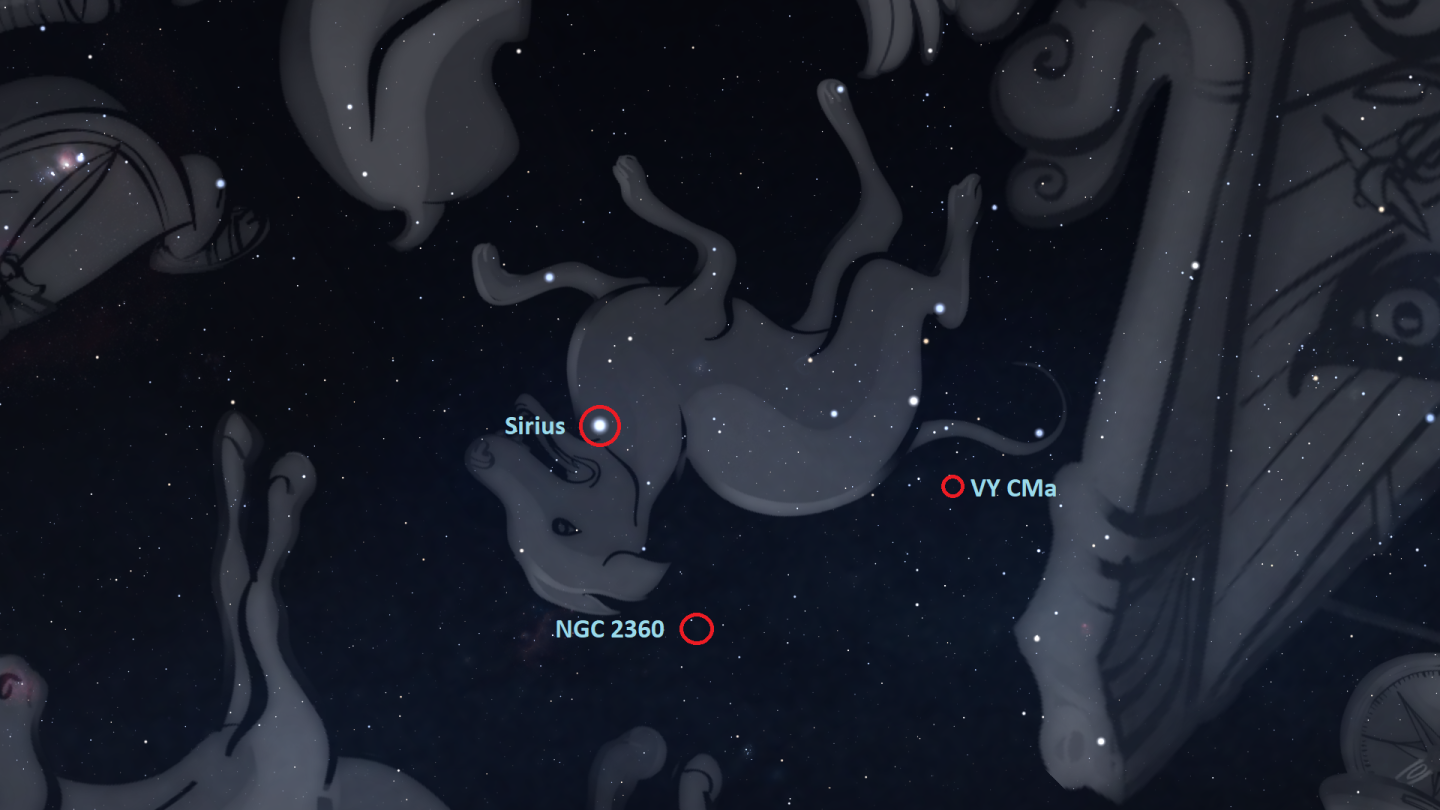
For those of you who are enjoying a view of the sky from the Southern Hemisphere, look towards the east in the early hours of the morning to spot the brightest star in the night sky, the star Sirius. Despite its bright appearance it isn’t even close to being the largest star in its constellation, being surrounded by hypergiants, including one of the largest stars ever discovered, VY Canis Majoris.
Sirius lies 8.6 light-years away and has a diameter 1.7 times that of the Sun, whereas VY Canis Majoris which has a diameter over 1,400 times that of the Sun, lies over 4,000 light-years away and so appears much fainter in the sky despite it being intrinsically brighter than Sirius.
There are also a number of open star clusters for you to enjoy, including Caroline’s Cluster, NGC 2360, named after Caroline Herschel, the first woman in England to receive a salary as a scientist.
The Moon's phases this month
- 3 October: first quarter moon (1:14 am)
- 9 October: full moon (9:55 pm)
- 17 October: last quarter moon (6:15 pm)
- 25 October: new moon (11:49 am)
If you're a fan of the Moon, then see the winners and shortlisted images in the 'Our Moon' category of the 2022 Astronomy Photographer of the Year competition.
Stargazing Tips
- When looking at faint objects such as stars, nebulae, the Milky Way and other galaxies it is important to allow your eyes to adapt to the dark so that you can achieve better night vision.
- Allow 15 minutes for your eyes to become sensitive in the dark and remember not to look at your mobile phone or any other bright device when stargazing.
- If you're using a star app on your phone, switch on the red night vision mode.
See our range of observing equipment
Share your pictures
This month's banner image is 'Circles and Curves' by Sean Goebel. It was one of the shortlisted images in the 2022 Astronomy Photographer of the Year competition.
Do you have any images of the night sky? If so, why not share your photos via our Royal Observatory Astrophotography Facebook group.
You can also connect with us via Twitter: @ROGAstronomers
Planetarium Shows
Join us for live planetarium shows
Royal Observatory Greenwich YouTube Channel
Subscribe to our YouTube channel and join us on a journey through time and space as we explore our Universe. You'll find a selection of videos on our channel, including our Observatory Online video series in which our astronomers explore different topics in astronomy and space exploration.
Resources for teachers and students
The Royal Observatory Greenwich's learning team has also created:
- Free animated videos that answer the biggest questions in astronomy and free resources to go alongside them.
- A whole host of podcasts featuring interviews with real space scientists, astronauts and active researchers working in UK universities.
- A 'learning at home' hub which contains a suite of resources for you to use at home.
